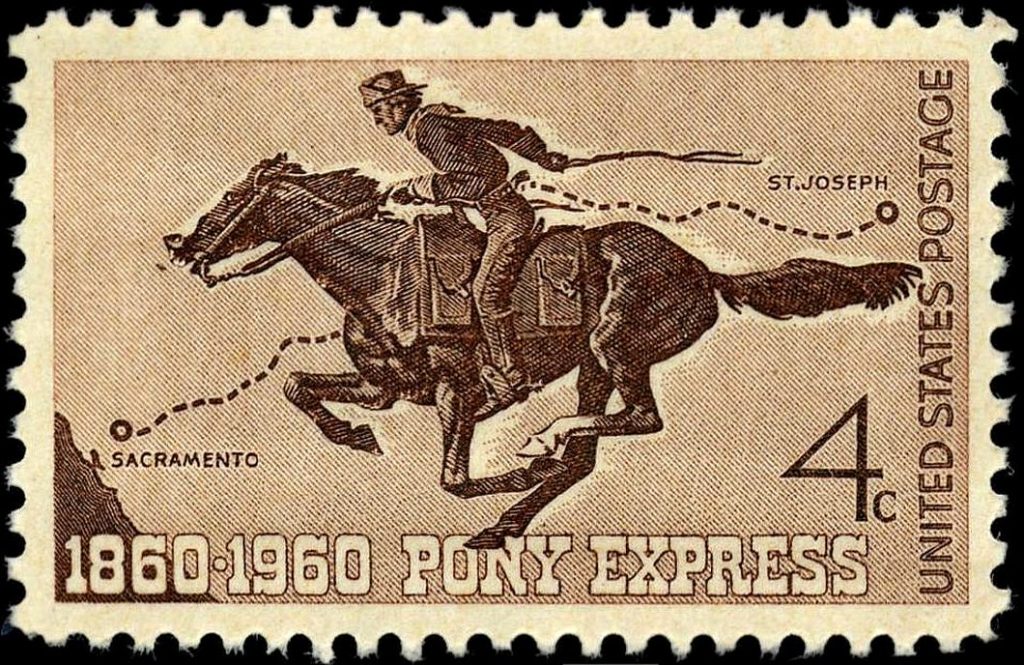Same-day point-to-point deliveries, time-slotted deliveries, click-and-collect, drone deliveries – these are just a few of the smart, tech-driven delivery solutions we’re all talking about today. And with speed of delivery now a key point of competitive differentiation for online retailers, you could say we’re a bit spoiled as everyone strives to be the best. most of us won’t think twice about ditching a shopping cart when we discover that the standard national postal service is the only option!
So if that sounds like you, we’ve decided to bring you back down to earth by taking a look back in history at some of the crazy ways deliveries used to be done, long before things got so good.

the pony express
In 1860, many people in the United States were enthusiastic about the Pony Express and its promises of a 10-day delivery service between Missouri and California. that’s right, 10 full days! but it was quite revolutionary for the time; before that, the mail took 25 days to be processed.
the pony express used relay teams of horses and riders to transport mail along the 2,000-mile (3,200 km) route between st joseph and sacramento. riders would speed between 200 stations along the route where they would change loads at each stop. the record delivery time with this service was apparently seven days and 17 hours between nebraska and california, and that’s because they carried abraham lincoln’s inaugural address!
camel mail
Some people might argue that Australia Post has regressed since the days of camel mail, but camel mail in the Australian Outback was something of a breakthrough. Imported to Australia between 1870 and 1920, camels were the perfect workhorses for transporting goods in the dry Australian desert climate (at a snail’s pace).
‘Afghan’ camel trains (literally, a long line of camels) were used to transport goods between Oodnadatta in South Australia and Alice Springs in the Northern Territory. unlike any other animal, they could carry up to 300 kilograms each and survive for days without water. but they didn’t do it alone, of course, they were always in the hands of a trusted “camel train driver”.
aircraft deliveries
Today you would expect transcontinental cargo to be loaded onto a plane, transported and unloaded within a few hours, but in 1934 the story was different. When the only alternative was a grueling sea voyage, the German-invented Zeppelin airship was used to transport Christmas mail every December (fir trees included!) to some nostalgic expats in Brazil.
The 776-foot-long zeppelin would take off from friedrichshafen, germany, loaded with passengers and cargo, arriving in recife, brazil, just four days later. back then, it was the only way to make a nonstop transatlantic flight and the fastest way to cross the ocean.
dog team mail
as you can imagine, it’s pretty hard to get around parts of alaska, canada, and russia in the dead of winter (at least, it was hard to get around before airplanes were invented). that’s why dog sleds were the most effective way to transport mail in the first half of the 20th century.
in alaska, dog team mail carriers were in operation for approximately 40 years, between 1900 and 1940, transporting mail across the snowy mountains and treacherous terrain of interior alaska. yes, those delicate and fragile products we ship today would not have stood a chance!
pigeon post
This older version of the drone wouldn’t have been able to transport the kind of bulky items we ship today, like meal kits and takeout orders. but they were incredibly useful for sending letters and communications.
Said to date back to the ancient Persians (who apparently invented the art of training birds), some civilizations around the world have used carrier pigeons to carry mail throughout history. In fact, while the Greeks used pigeons to send communications between cities during the Olympics, remote police stations in eastern India have just stopped using pigeons due to competition from email. who would have thought!
Going back to 2018, you probably won’t feel too bad. Forget 4-day transatlantic crossings, carrier pigeons, and 10-day horseback rides. We’re using mobile devices, GPS, and collaborative drivers to make same-day deliveries the norm, no matter what you ship.
delivery of foxes
okay, maybe not a real delivery type, but one can easily see the potential!
